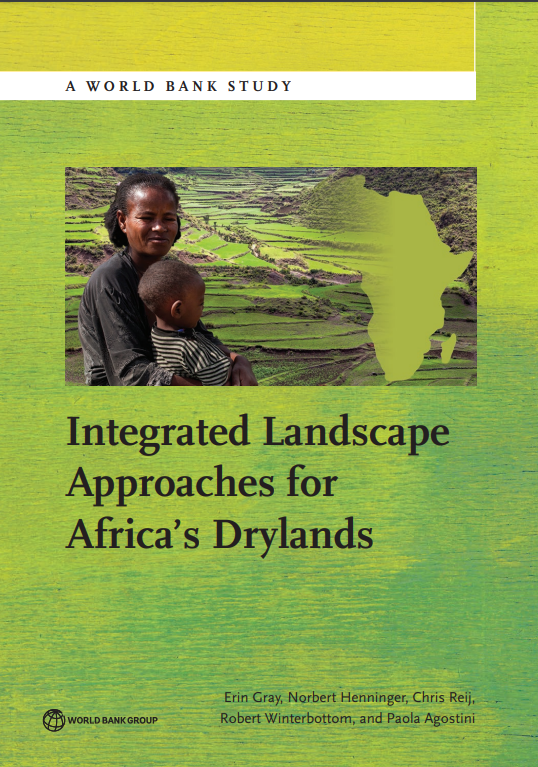Integrated Landscape Approaches for Africa's Drylands
Editorial: The World Bank Group
Licencia: Creative Commons (by)
Autor(es): Gray, Erin; [et al.]
Integrated Landscape Approaches for Africa's Drylands presents emerging findings on the importance of moving beyond single-sector interventions to embrace integrated landscape management that takes into account the health of the ecosystems that support human livelihoods and contribute to the resilience of rural communities in Sub-Saharan African drylands. Integrated landscape management is particularly important for these drylands because people depend on production systems that are frequently disrupted by exogenous shocks such as drought. The ecological and economic evidence presented in this book shows that integrated landscape management can enhance efforts to invest in tree-based systems and improved livestock management and support productivity increases for rain-fed cropping. Integrated landscape management efforts have helped to coordinate the actions of multiple land users and other stakeholders, reduced confl icts, and improved overall governance of water, land, and other resources. Integrated landscape management is thus a useful approach to enhance the intensification of dryland cropping systems and will, in many locations (but not always), result in multiple wins— including improved farm productivity, water benefi ts at the farm and landscape levels, carbon sequestration, biodiversity and other ecosystem services benefi ts, and higher climate resilience. Various policies and related interventions can be used to trigger and accelerate the scaling up of these benefits through integrated landscape management across Sub-Saharan African drylands to restore and increase household and ecological resilience. Policies are needed to develop the framework conditions necessary to both initiate new programs and modify and scale up existing restoration and resilience efforts. The book highlights policy options, covering six broad intervention areas: (1) Clarify land rights and responsibilities; (2) Encourage multistakeholder involvement and collective action; (3) Overcome institutional barriers to integrated landscape management; (4) Create conditions for adaptive planning and management; (5) Create mechanisms and supporting policies for sustainable and long-term fi nancing of integrated landscape management; and (6) Invest in a solid evidence base and knowledge-sharing platforms for integrated landscape management.
[Washington: 2016]
Compartir:
Una vez que el usuario haya visto al menos un documento, este fragmento será visible.


